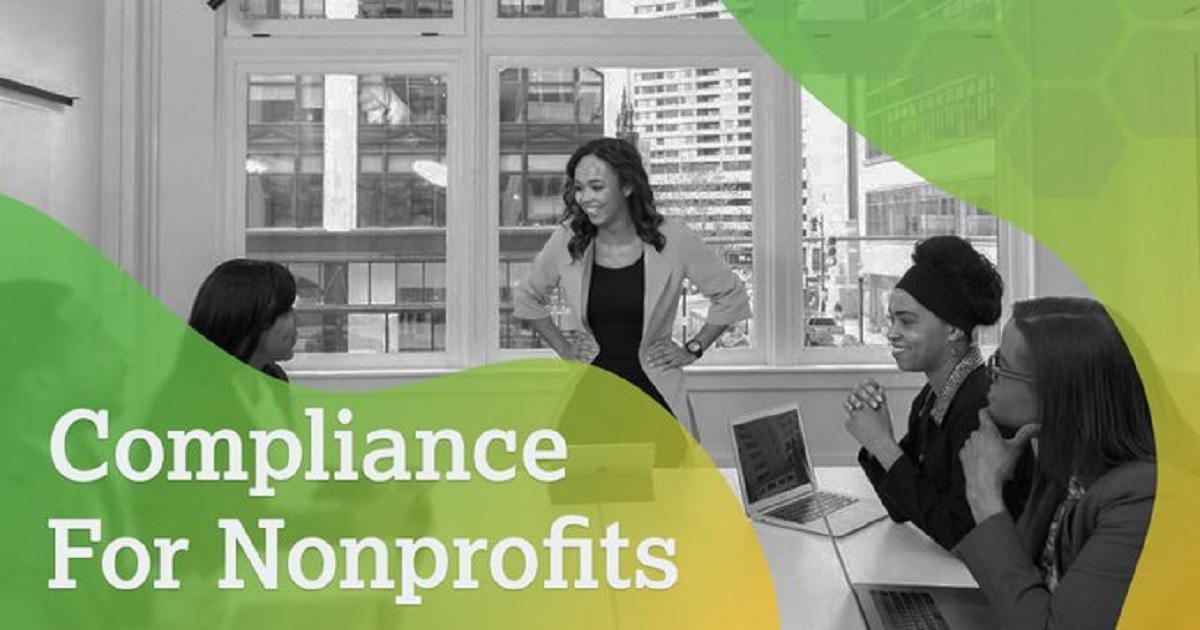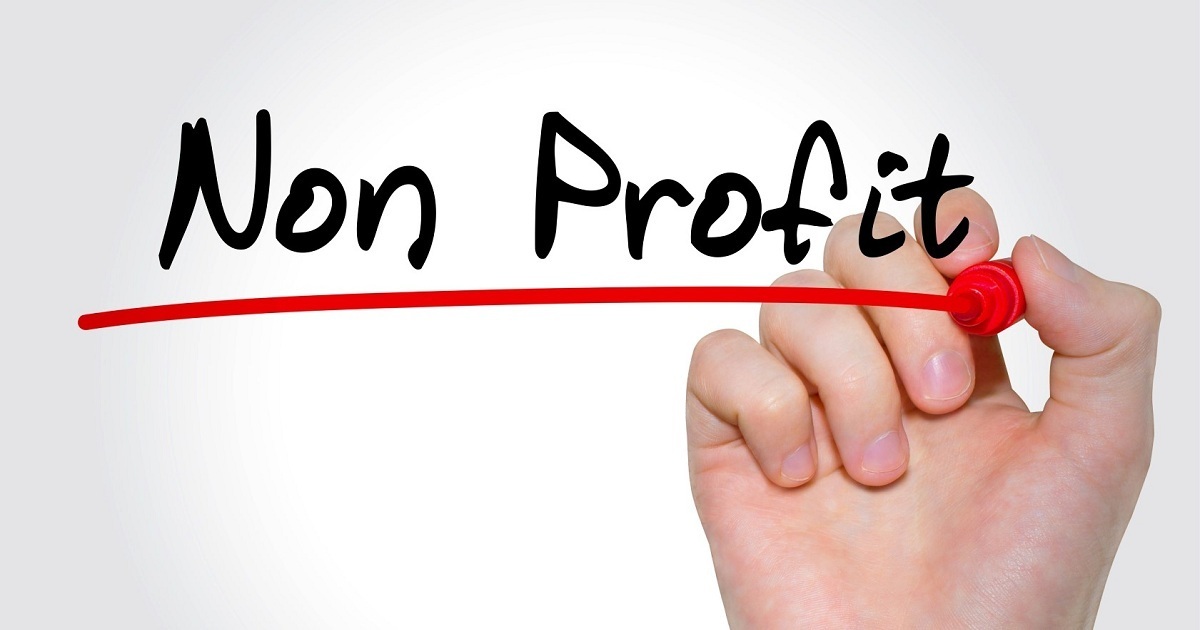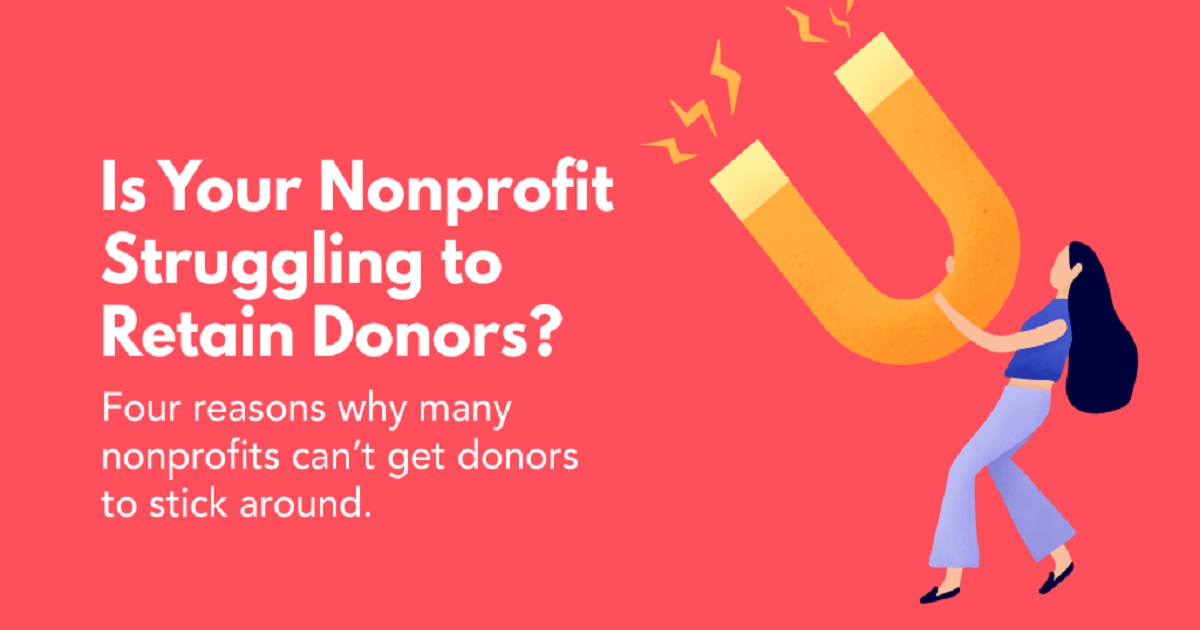
Nonprofit Management
Article | July 13, 2022
When those in the nonprofit sector consider “compliance” the first thing that often comes to mind, and rightly so, is maintaining nonprofit status with the Internal Revenue Service. That makes sense, because failure to properly maintain nonprofit status has significant implications on taxes and can negatively impact fundraising. But compliance for nonprofits shouldn’t stop there. A comprehensive, documented compliance program, that includes privacy, security, marketing, donor and grantee diligence, and vendor management, for example, can go a long way to protecting the organization, its donors, and its constituents.
Read More

Fundraising
Article | July 15, 2022
With more than 33 years working in, or for, the nonprofit sector, I've learned a lot of things about being an executive director or CEO of a nonprofit organization. I wish someone had been around to tell me beforehand what I should know, but unfortunately, like many E.D.'s I was originally thrust into the mix without a clue. So, for your benefit, here are the top 10 things I wish I knew before I joined a nonprofit board. Perhaps they will help you to serve better on the right board or to prevent you from serving on the wrong board for your specific background, talents and temperament.
1. The Board, Not the CEO, is Accountable
Board members need to understand that it is not the CEO but the Board that is in the box at the top of the organizational chart. Being in that top box means accountability for everything that happens in the organization. The buck doesn’t stop with the CEO but with the board.
I’ve seen this: For several years, an organization covered expenses by spending down every penny of a $1.5 million endowment. Every year, their board of high-powered business people approved a budget that actually planned for income from bequests, as if they could predict when their donors might die. When things finally came to a head, the board’s response was to ask the ED, “Well what are you going to do about this?” It never occurred to them that THEY had been accountable for the mess all along!
The board, corporately, is ultimately accountable when things go right, and when things go wrong, and it needs to know how to put that accountability into practice.
2. A Board Should Never Micromanage
Some boards see micromanagement as the road to accountability. Some see it as a detriment, but still can’t seem to stop. Either way, if your board is micromanaging, they are on the road to failure.
I’ve seen this: An organization had come through a time of financial hardship. They had eliminated their debt and were now operating from a position of fiscal strength. The board, however, was still in hardship mode, scrutinizing every purchase, no matter how small. They took 10 minutes at a board meeting to “investigate” why the staff went to one store vs. another, where they could have saved (I’m not kidding) $20 on a $200 item. The staff knew that every move they made would be second-guessed, and eventually they became immobilized. The board saw this as further proof of the need for scrutiny, and that cycle eventually crippled the organization.
Micromanagement is the opposite of accountability. True accountability is proactive and preventative, while micromanagement is reactive and fear-based.
3. My Involvement Will Not Fix a Dysfunctional Board
Sometimes our ego gets in the way, and we think that our involvement with a board will finally fix whatever problems the board has been having. From poor attendance to bickering and feuds, to the countless other issues boards face, my personality and skills alone will never solve these problems. It will simply bring one more person into the morass, to endure and potentially exacerbate those problems.
I’ve seen this: Board members in a rural area often drove for as much as an hour to get to board meetings, only to find there was no quorum. Frustrated, they instituted policies for removing board members who failed to attend meetings, only to lose those board members entirely. The reason? Aside from reviewing reports, the board did virtually nothing of significance for the organization. Once the board refocused its purpose (and then refocused its meetings!), attendance was almost always 100%. And new board members could be assured that board meetings wouldn’t waste their time.
4. My Time on the Board Does Not Equal Money
Every board should have a policy requiring board members to donate to the organization to the best of their means. This is NOT a fundraising issue. This is a living-by-example issue. If the board doesn’t believe the organization is worth investing in, why should a donor? How can we ask others to give generously when we haven’t done so ourselves?
I’ve seen this: Some of the board seats of an organization serving low income families are reserved for recipients of the service. As a condition of a large gift, a donor wanted to be assured the board had all donated as well. When the “client” board members were asked, “What amount could you give - even if it’s just 25¢?” they all gave. One client wept as she handed over a $1 bill. “This is an honor. No one has ever asked me to participate in this way before,” she said. However, some of the non-client board members became angry, saying they were never told they would have to donate their time AND their money.
With a giving policy in place, prospective board members will know what is expected of them BEFORE they join the board, and before a donor puts them on the spot by asking, “Has all your board given to the organization?”
5. The Board/CEO Relationship is Crucial for Success
If the board’s relationship with the ED isn’t great (or it stinks), or there are hard feelings between the board and staff overall, this will carry into every decision made by the organization. The Board/CEO relationship is like a marriage. It requires work! It also requires a great deal of trust and communication. Without these two ingredients, the organization is likely to ultimately fail.
I've seen this: An ED spent 20 years growing an organization to a nationally recognized and widely copied model for providing service. The board began attracting heavy-hitters, many of whom joined for the status of affiliating with this group, but who felt little passion for the mission. A rift was created between the board, who was mostly concerned about the organization’s finances (which were, by the way, in great shape), and the staff, who were mostly concerned about meeting the community need (for which they continued to maintain a stellar reputation). After a few years of this battle, the ED retired early. It has now been 2 years, and the board is still arguing over what they are looking for in a replacement ED.
Problems between the staff and the board are almost always symptoms of something larger - usually a lack of understanding / focus on the organization’s vision or its values system. It is important that a board with these kind of issues receive some kind of “marriage counseling.”
6. The CEO Should Not Be the Only One Recruiting Board Members
If the nonprofit CEO is the one doing most (or all) of your board recruitment, I probably don’t want to join the board. Look at the organizational chart. Do you really want your CEO hand-picking his/her boss?
I’ve seen this: A CEO did all the recruiting. She also determined what would be on the board’s agenda every month, and provided the board with the information she felt they should have. Not surprisingly, the board never did anything but rubber stamp what the CEO suggested. In this organization, the board really thought they worked for the CEO!
If the CEO is your board’s main recruiter, then your board likely has far more problems than you might suspect.
7. Planning and Implementing are Two Different Things: Both are Needed
An organization needs plans for how it will impact the community and plans for how it will ensure it has the capacity to create that impact. If the board has plans, but no clue about the status of those plans, that’s just as bad. An organization's plans are your answer to the big questions - Why are we here? What are we trying to accomplish for the community? If the board can’t answer those basic questions, then what exactly is the board doing?
I’ve seen this: An organization was required to have a strategic plan for accreditation. Every year they hired a consultant, created a plan, and did nothing to implement it. When they called to ask us to facilitate their next planning session, we told them we couldn’t do a plan unless we were assured the board would monitor its implementation. And they had no idea what we meant.
A board needs to understand that “ensuring that the organization is making the community a better place” is one of their primary areas of accountability.
8. The Bylaws Determine How (And If) the Board Works
Does the board have term limits, or can someone be on the board forever? Is it clear what types of actions could get someone thrown off the board, and what the process would be for removing them? Policies and procedures will guide board decisions and expectations.
I’ve seen this: A board president called for advice: One of his board members had embezzled from their small nonprofit, but the rest of the board wouldn’t vote to remove him from the board. After I picked myself off the floor, I asked if they had contacted the police or an attorney, as this was a legal issue first, and only then a policy issue. Yes, he said, he knew they needed an attorney, but right now he needed to convince the rest of the board to remove this guy. Without a policy, the rest of the board felt sorry for the embezzler and wouldn’t vote to remove him. So there he stayed, attending meetings and voting on organizational matters, months after the discovery had been made! As extreme as it appears to be, with no policies in place, the board was in a quandary about whether or not to remove their “friend.”
If you are thinking this couldn’t happen to your board, you might be surprised at some of the bad behavior I have witnessed from otherwise rational people - behavior that seems to only show itself when they find themselves on a nonprofit board. Without consistently applied board policies and procedures, it is more likely that your own odd sets of circumstances could knock your board (and your organization) for a loop.
9. Someone Has to Provide Me Training and Orientation
The board must have an orientation program, and new board members need more than their board manual and perhaps a tour of the facility. Without training, how will I know what is expected of me? And how will the organization be assured that I am capable of guiding the organization?
I’ve seen this: I once gave a long-standing board a quiz about their organization, with easy questions like “What is your annual budget?” and “Name three programs the organization provides” and “Name one staff person aside from the administrative staff, and tell what their position is.” They all failed. Many had been on the board for 20 years, and each and every one of them failed the quiz. How could they govern if they didn’t have such basic information? Often, I perform this same quiz about the organization's mission ("Tell me the mission statement of the organization") and 99% of the time, they also fail.
Board members must be well informed about the organization from the moment they are permitted to vote, because otherwise they won’t be able to do the job. At the very least, they should be able to recite the mission statement! The organization must also ensure that every single board member understands how to read the financials (not just those on the finance committee), so that every board member can be accountable for decisions that require financial understanding (like approving the budget, approving new staff positions, etc.).
10. Why Do You Want Me, Anyway?!
This will sound ridiculously simple, but it is critically important to know why the organization wants me-specifically- to serve on their board! What skills, talents, experiences do I bring to the table that complement the rest of the team? Being asked “Will you serve?” with an answer of “yes,” should not be enough for me to secure such an important position.
I’ve seen this: "Warm blood and a pulse." If only I had a nickel for every board who told me this is their recruitment criteria. If prodded, they might offer that they are seeking "business people" or "people with connections." On the other hand, when I ask what criteria and processes they have in place for recruiting their janitor, they rattle off a whole litany of qualifications and reference checks, etc. If our boards are accountable for everything our organizations do, shouldn't we have at least as good a process for "hiring" board members as we do for hiring the janitor?
A board must have a solid recruitment process that includes not only applications and interviews, but first and foremost knowing what they are looking for, and how I fit into that mix.
Read More

Nonprofit Management
Article | July 12, 2022
If you gather a group of nonprofit professionals and ask what their biggest fundraising challenges are, many will likely say they don’t retain enough of their donors. Are you one of them? Do you find yourself asking, “why is my nonprofit struggling to retain donors?” It’s no secret that long-term, repeat donors help you raise more money. And we know that the average donor retention rate for nonprofits hovers around 45 percent. But why has this number remained flat for years while nonprofits continue to focus on donor retention? We find there are a few key reasons why nonprofits struggle to retain donors. And you know that no two donors are the same and there is no one-size fits all approach to fundraising. But while the solution for each nonprofit may be different, many are struggling to retain donors for similar reasons.
Read More

Nonprofit Management
Article | May 20, 2022
Volunteers are the lifeblood of any nonprofit. Your services, fundraising campaigns, and even day-to-day operations of your nonprofit can depend on volunteers.
An estimated 30 percent of Americans or 77.9 million people reported they volunteered for an organization or association.”
AmeriCorps published survey
So, if people want to volunteer, the key to garner willing volunteers is to:
Communicate your needs
Share your “why”
Make it easy
While all nonprofits know they need volunteers, investing time and energy into building a program can naturally fall by the wayside. As you look to recruit and retain volunteers, a best practice is to put a strategic volunteer program in place.
You may be asking, “What’s the benefit to me, the nonprofit?” Let’s dive into it!
First, let’s start with the basics — what are the top reasons to invest in a volunteer program? We’ve got you covered. A dynamic volunteer program:
Creates ambassadors for your mission. Volunteers spread the word in your community and increase your community engagement. They can advocate for you with their friends, family, and local and state legislatures. Provide your volunteers with messaging so they can share their “why” on social media and by word of mouth. One pro tip shared by Points of Light is to provide a digital badge to add to your volunteer leaders’ email signatures.
Develops new funding sources. The line between a volunteer and donor should be fluid, not separate. A 2014 study by Fidelity Charitable found that 83% of volunteers report supporting the same nonprofits with their donations. Don’t silo your volunteers and your donors!
Reduces your operating costs. According to the Independent Sector, the value of a volunteer hour was estimated at $28.54 in 2020. Since payroll is often the largest expense for a nonprofit, volunteers provide essential support to your cause with minimal costs to you.
Increases the quantity and quality of your programs and services. It’s a win-win situation for professional development and your lengthy project list! That list will be met by an eager, talented volunteer, and your volunteer will improve their professional skills at the same time.
Maximizes your limited staff resources. We’re sure there’s been a few items on your wish list that you’d love to check off if you had more resources, like being open on holidays or offering more services to your community. Volunteers can fill in those gaps! Maybe they are looking for ways to give back over a holiday, or they may have the connections to develop a new service opportunity for you.
Increases your diversity and brings in new ideas. Although your nonprofit may always strive to diversify or get out of the “we’ve always done it this way” rut, you may not meet the potential of those goals with your staff. Volunteers can provide unique perspectives, different experiences, and even that spark of excitement that comes with a new idea.
Minimizes volunteer turnover.Just like staff onboarding, volunteer onboarding takes time and money. If you recruit and onboard well with easy-to-access opportunity matching, training, and tracking mechanisms in place, your volunteers will be well on their way to a successful experience. Build on that by learning more about your volunteers’ interests and skills, and they will feel seen and appreciated. An upfront investment will pay off in years of dedicated service.
Are you convinced? If so, it’s time to take the next step of how to start putting a volunteer program into place. Then you can scale your volunteering as your nonprofit grows!
Here are our 5 fundraiser-approved steps to developing a bullet-proof volunteer program.
Step 1: Quantify your current volunteer impact.
Gather data on number of volunteers, hours and skills contributed.
Measure the return on investment (ROI) including your program cost and total estimated volunteer value (# of volunteer hours x est. volunteer wage per hour). You can even take it a step further and consider the monetary savings to the community when volunteers provide the service or in-kind donation versus a private provider (e.g. number of children tutored or trees planted).
Step 2: Educate your staff and board on the benefits of volunteering.
Share your ROI and other data with your executive team and board and garner to get them on board. Recruiting, onboarding, engaging, and retaining your volunteer base will be much smoother when you have their support.
Step 3: Purchase or build a volunteer management software system.
Track volunteer hours, record your volunteers’ information, and create reports. Your software/tracking system should include a personalized volunteer dashboard where they can track their hours and volunteer services provided, demonstrating to them their impact in real-time.
Step 4: Develop a plan for recruitment, training, and growth opportunities for your volunteers.
Share the plan with your current volunteer leaders and solicit their feedback before rolling out to the community.
Step 5: Make the case for even more investment in your program next year.
Give insight into how your efforts to recruit, engage, and retain volunteers positively impact your mission and your bottom line.
Read More